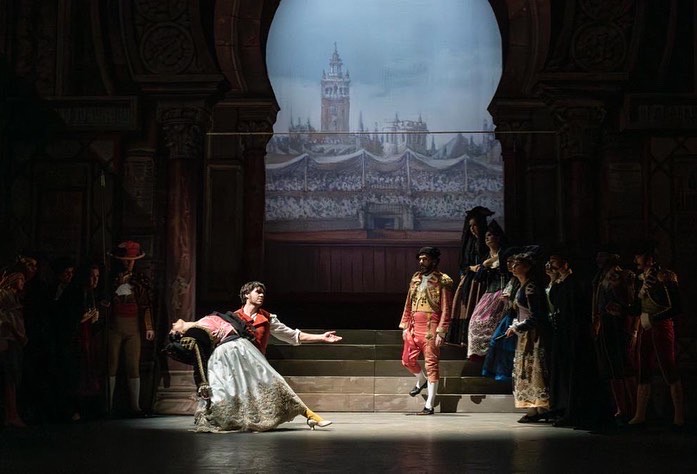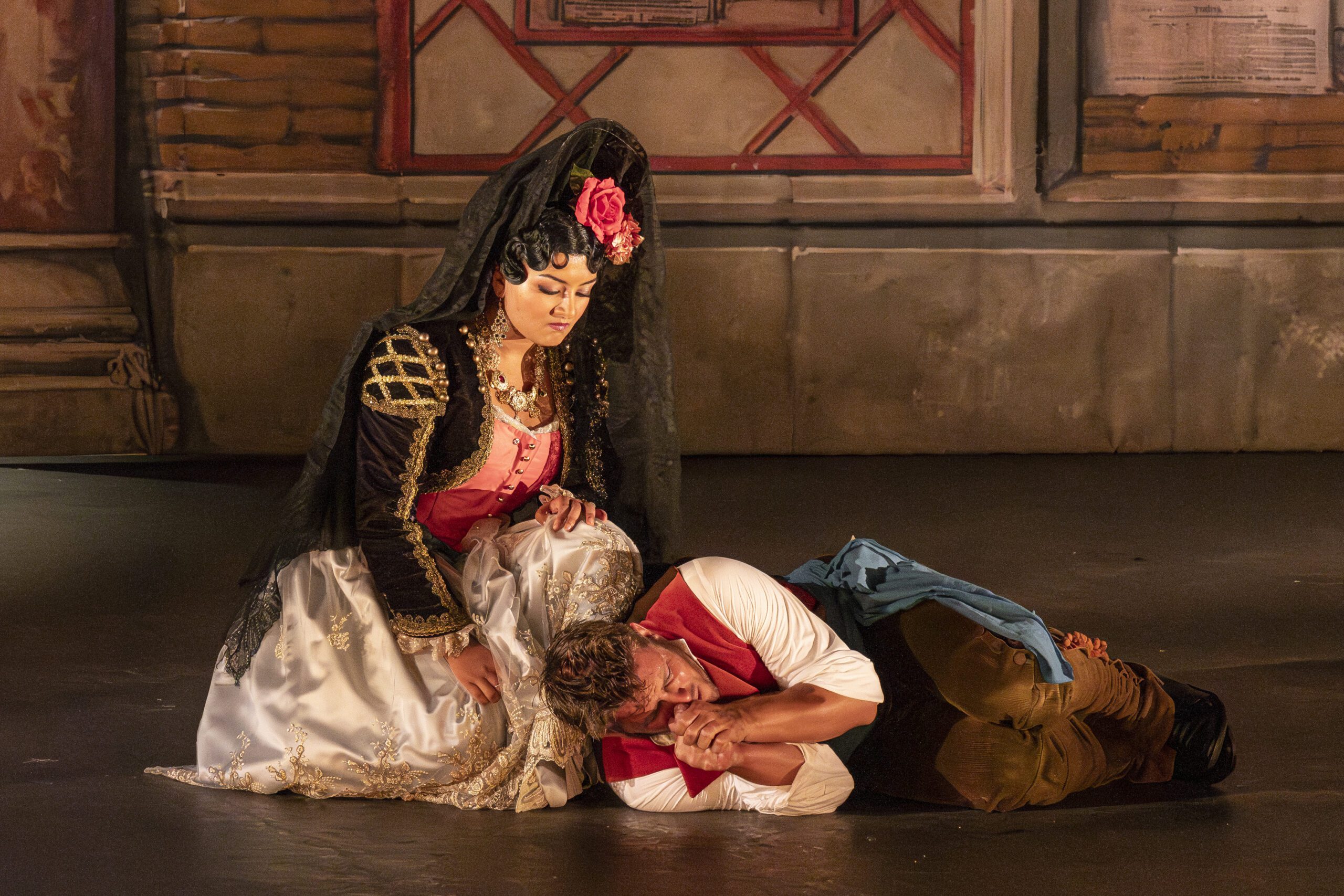According to the beautiful book that accompanies this video recording, Palazzetto Bru Zane is dedicated to “the rediscovery and international promotion of the French musical heritage of the period 1780-1920.” Typically associated with lesser-known works – its operatic catalogue includes works by French composers like Charles-Simon Catel and Victorin de Joncières – Carmen seems an unusual choice for this company. This, however, is no ordinary production of Carmen.
Billed as the “historical staging of 1875,” it been reconstructed from the original staging manual and pictures of the original costumes and sets. In the 19th century, there was no director in opera, and the original staging was developed by the composer, librettist and stage manager working with the singers. In France, these stagings were compiled in staging manuals (livrets de mise en scène) which included sketches for the placement of people onstage and coloured plates showing costumes and sets. The manuals could be used by other companies to remount the work.
This production of Carmen is not, however, a strict historic recreation of the original 1875 performance, particularly in the use of recitatives as opposed to the spoken dialogue. Étienne Jardin, directeur de la recherche et des publications at Bru Zane refers to this staging as historically informed, “rather than historically constrained.” In a time when more and more productions of Carmen have been moved by directors into eras and concepts that would have been unfamiliar to Bizet, this 2023 production represents a simple and sometimes refreshing alternative, although it may lack some of the outward passion of other versions.
Omani-born Canadian mezzo-soprano Deepa Johnny sings the title role. Johnny’s timbre is lighter than that of some recent Carmens, and her Habanera is more playful. Her Seguidilla “threads the needle” between playful innocence and just sufficient seductiveness to entrap Don José, although one wonders why the three guards, with their backs turned but no more than five feet away, don’t anticipate the escape plot. As an actress, Johnny shines in the second act scene with Don José, where she is alternately wheedling, petulant, and beguiling.
As Don José, French tenor Stanislas de Barbeyrac has a beautiful timbre. He struggles with vocal placement in some of his singing, particularly in the first act, but his rendition of “La fleur que tu m’avais jetée” is beautiful and demonstrates a lovely control of his upper range. Among the principals, his performance seems least constrained by historical convention. One moment, where he slaps Carmen just prior to this aria, is particularly shocking and presages the violence to come.

Image from historical documents recovered from the 1875 premier of Carmen.
Iulia Maria Dan is a lovely Micaëla and sings beautifully in both the duet with Don José and “Je dis que rien ne m’épouvante.” Surrounded by so many lighter voices, bass Nicolas Courjal might be an unusual choice as Escamillo, but the Toreador Song is still a highlight of the second act.
Director Romain Gilbert does fine work motivating the performers to find the emotional beats within the historical blocking. He also makes some surprising choices with mixed success. The slap, mentioned above, is shocking, but the inclusion of Lillas Pastia in the Act Two quintet and some of the chorus business in the background of the card-reading trio in Act Three is just distracting. The orchestra, under Ben Glassberg, plays meticulously and cleanly, and the balance with the soloists is excellent, although balance is sometimes less well maintained with the chorus.
The costumes, recreated by French designer Christian Lacroix, are beautiful. They are more based in fantasy – the 19th-century French concept of “exotic” Spain – than in reality, and it seems strange that the smugglers wandering through the mountains are so pristinely clean and tailored. Lighting designer Hervé Gary replaces the gas lights of the original 1875 production with modern footlights. His reliance on front lighting complements the painted sets, but it also creates some challenges with shadows that remain unresolved. The sets of Antoine Fontaine are beautiful and show particularly elevated stage painting.
The technical aspects of the video are excellent. The package includes Blu-ray disc and traditional DVD as well as access to the materials online. For this review, I watched the Blu-ray disc, and sound (available in both stereo and 5.1) and video (NTSC 16:9) quality were uniformly excellent. Subtitles are provided in English, French, German and Italian. The beautifully assembled hard-cover book that accompanies the video has informative essays from Bru Zane, the director and the designers printed in all four languages – it alone is worth the purchase price. The disc also includes a 15-minute documentary that includes interviews with the director and designers, although it contains little information beyond that in the printed essays.
Overall, this production, however, is an oddity. It is worth owning for the historical and museological intent, and it is a decent Carmen for those not looking for a director-driven, conceptual interpretation, but there might be more dramatic performances – even with traditional costumes and settings – in other video recordings of the work.

Recreation of image above in Palazzetto Bru Zane’s production.
Opera Canada depends on the generous contributions of its supporters to bring readers outstanding, in-depth coverage of opera in Canada and beyond. Please consider subscribing or donating today.











